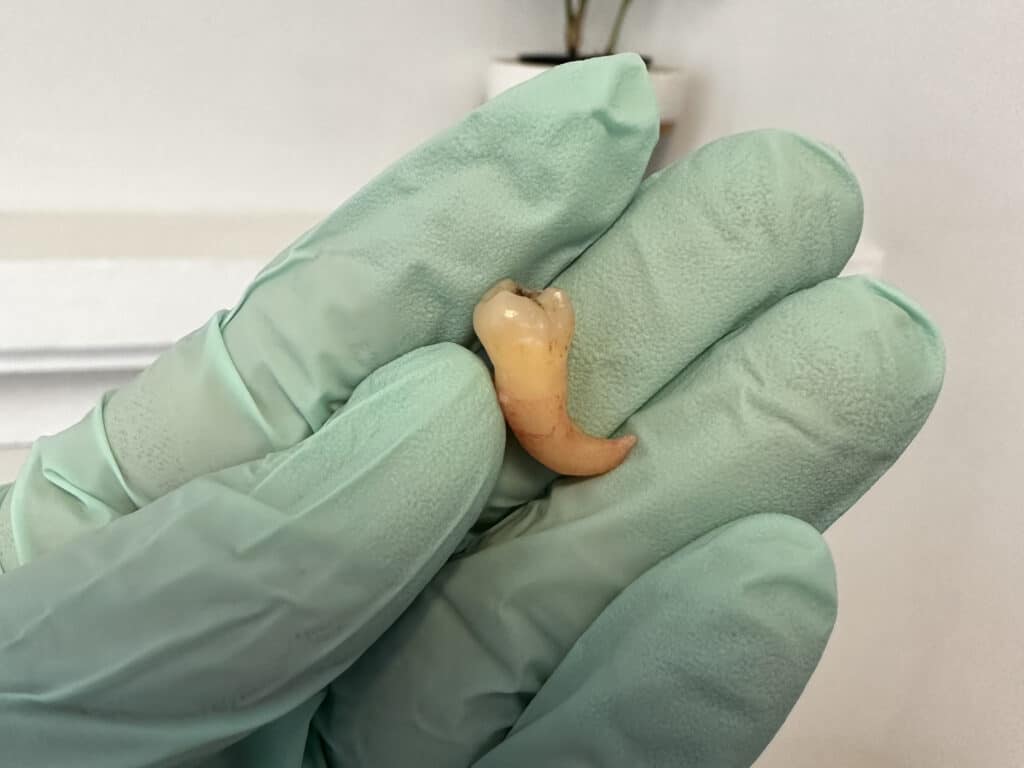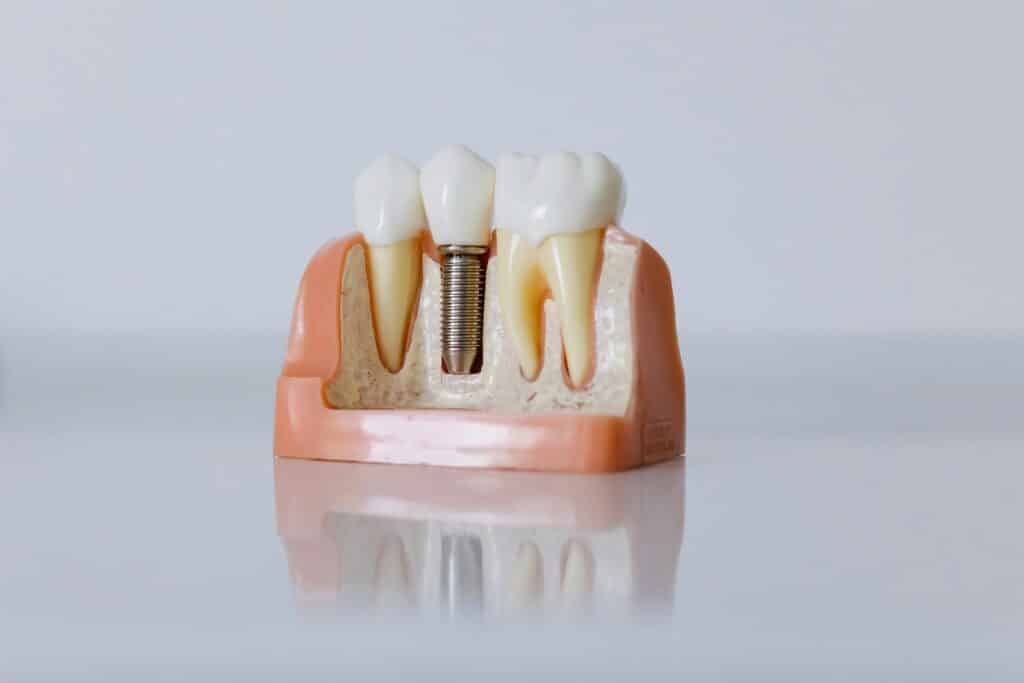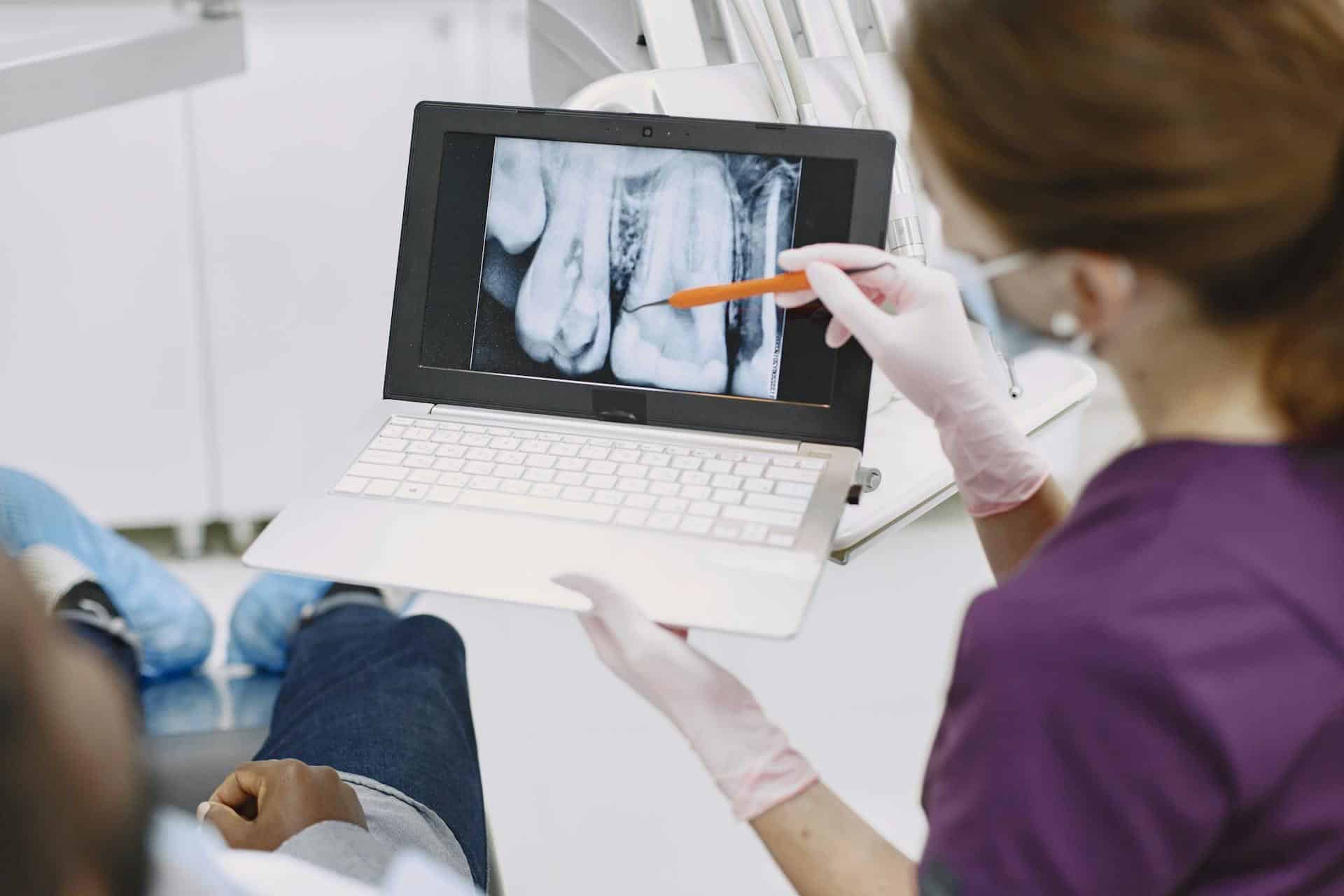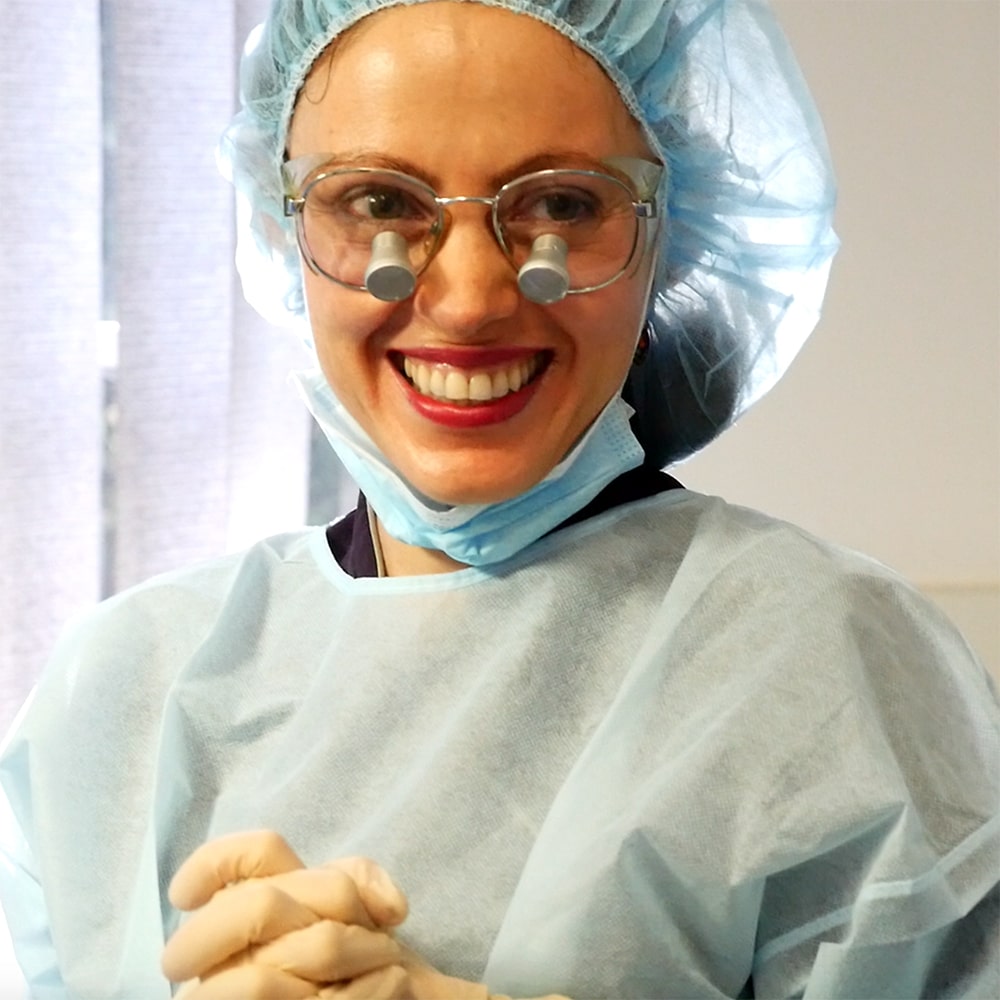Losing a tooth can be an unsettling experience, often accompanied by concerns about how it will affect your eating, appearance, and self-esteem. Luckily, we have good tooth replacement options. With advances in implantology, dental implants have become very popular. There are no surprises! A dental implant can feel just like your natural tooth. However, an implant requires a good volume of jaw bone for anchorage. As soon as a tooth is removed, bone naturally shrinks, and replacing a tooth with an implant becomes progressively harder as time goes on. It is important to preserve as much bone as possible during tooth extraction.
A simple procedure called a “socket graft” will prevent you from having a headache in the future and maximise your chances of simple implant placement after a tooth extraction. If you are about to lose a tooth and are considering replacing it with an implant, this article is for you. I want to provide you with all the tools to make an informed decision to have or not to have a socket graft at the time of extraction.
What Happens After a Tooth is Removed?

After a tooth is removed, bone naturally shrinks in volume. Imagine this: a tooth sits in a bony socket, and when the tooth is removed, that socket heals by shrinking. So, in about three to six months, the bone is significantly thinner than what it used to be when the tooth was there. The most shrinkage happens in the first three months after the tooth is removed, but it continues to shrink after 12 months, and even after the first year, there is still some shrinkage but at a much lesser rate.
What is a Socket Graft and When is it Needed?
Socket grafts play a crucial role in preventing bone loss by preserving the integrity of the extraction site. If we are planning to replace your tooth with an implant, we want to preserve that bone, to have a nice solid, good volume of bone to receive that implant. Thus, we need to minimise bone shrinkage. There will be shrinkage regardless, and we can’t prevent it 100%, but we can significantly reduce it.
Therefore, I perform a procedure that’s called “socket grafting.” This simply involves filling the remaining socket with granular, particulate bone material. This material looks like tiny garlic granules. It is composed of calcium and phosphate derived from either human origin (e.g., Mineross), from an animal source (Bio-Oss), or from a synthetic source. Evidence tells us that synthetic bone is nowhere near as effective as other sources. Animal bone is commonly used, and it generally comes from a cow. However, it is not as effective as human bone as it doesn’t solidify as quickly. So you will have to wait a lot longer (7-9 months) before placing an implant if animal bone is used. On the other hand, bone from human origin turns into your own bone and the area should be ready to receive an implant within three to four months. It is quite an incredible material that serves as a matrix for your own bone and your DNA to grow in, and it literally becomes a part of your jaw. In case you are wondering about any risks of virus transmission, rest assured that before this material is sold to surgeons, it is rigorously screened for transmissible HIV, Hepatitis C, and Hepatitis B viruses so it is perfectly safe.
Once in place, a protective suture (stitch) is used to keep the socket graft in place for the duration of the healing process. Once healed, the suture resorbs by itself or can be removed by your dentist.
Can a Socket Graft be Done a Few Days After Extraction?
Timing is key when it comes to socket grafting. The socket graft must be done on the same day as the tooth removal. The reason is after the tooth is removed, the natural healing response by the body is to fill in the socket with a blood clot. This process happens within minutes of tooth removal. If we remove the tooth, allow that blood clot to form, and then you come back a few days later, we need to disturb the socket. Technically, it’s possible, but why would you want to delay for another day and have two surgeries instead of one?
Another question that some patients ask me is, “Can I do the socket graft a few months later?” I wouldn’t bother with a socket graft then. By this stage, natural bone formation is well and truly underway, and there is no socket to graft. So if you didn’t have a socket graft, don’t despair, there’s a good chance that you might have enough bone for an implant, but maybe just not as much, yet it could still be enough.
How Much Does a Socket Graft Cost?

A socket graph typically costs a few hundred dollars. To give you a good indication, a dentist might charge around $600 to $1,000 to have a tooth removed and a socket graft performed. It’s not overly expensive considering that you are already paying a few hundred dollars to have a tooth removed. You are only paying a few hundred dollars for the extra assurance that you are likely to have enough space for an implant.
If you opt out of having a socket graft it could cost you more later if you need to regrow bone with a more involved regenerative bone graft, so it’s well worth your while.
When is a Bone Graft not Required?
As mentioned, if some time has passed after tooth removal, it is generally too late for a socket graft – just wait! Also, if you are lucky to have thick 2-millimetre walls of bone all the way around the tooth, a socket graft is not required as you will almost certainly have enough bone once the area heals, without the helping hand of a socket graft. However, this is rare, and the dentist might have difficulties gauging how much bone there really is, so a socket graft is the safest option.
What Can Increase the Risk of Socket Graft Failure?

Socket graft failure is rare but when it happens, it is usually caused by a pre-existing infection or a post-operative infection.
If an infection is present when removing a tooth, it is advisable to first take a course of antibiotics starting one day before you have the tooth removed to contain that infection and minimize the risk of it being active on the day of the extraction. At the time of the tooth being removed, a dentist will typically clean out the socket. This process is called curetting the socket or cleaning out the infected area.
As for postoperative infection, simply because you’ve had surgery, an open wound can allow bacteria from the mouth to seed inside the socket and cause a localized infection of the socket. What we know is that any infection is acidic in nature and acid dissolves bone, and thus can destroy the bone graft as well as the surrounding natural bone. Again, antibiotics are a simple prophylactic measure, to reduce the risk of infection.
How do You Need to Care after the Surgery?
There is little that you need to do after a socket graft. Recovery is even easier than after a regular tooth extraction. You don’t need to do anything other than take your antibiotics, painkillers, and avoid disturbing the area with your tongue or food. Eat carefully and avoid vigorous mouth rinsing. A dentist will often recommend saltwater rinses after a tooth extraction. In contrast, this is not advisable after a socket graft as any rinsing can disturb it. Brush your teeth gently and allow nature to take control. The area will heal in no time.
How Long Do I Need to Wait to Have an Implant Done After the Socket Graft?

Tooth replacement following a socket graft requires careful timing for the best outcome. This timing will depend on what material was used for the socket graft. If human donor bone is used, generally 4 months after grafting is the best time to place the dental implant.
If the socket graft is of animal origin, it takes a lot longer to solidify, generally around 7-9 months… If synthetic bone is used, around 3-4 months is sufficient before implant placement. However, synthetic bone is the last option when choosing the bone graft material.
For personalised dental care and guidance, schedule a consultation with Dr. Helen here!


